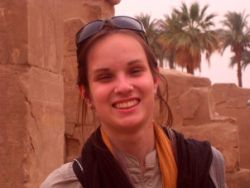The Agricultural Economy of Islamic Jordan, from the Arab Conquest to the Ottoman Period.

Annette M. Hansen
E-mail: a.m.hansen@rug.nl
Supervisors: Prof. dr. R.T.J. Cappers, Prof. dr. B.J. Walker, and Dr. W.M. Jongman
Period of employment: 1 October 2014 - 30 September 2018
Financed by: NWO, PhD in the Humanities
Project Description:
This project aims to reconstruct the development of the agricultural economy in Islamic Jordan between the 6th and 16th centuries, through the lens of intertwined choices for technologies, crops and other innovations against the background of political, cultural and demographic developments. Six archaeological case studies will be evaluated from southern Bilad as-Sham: Tall Hisban, Bayda, Ghor as-Safi, Shuqayra al-Gharbiyya, Khirbet Faris, and Khirbet Beit Mazmil.
First a model will be constructed in which the factors that determine a crop and practice-choices are related. This will be done using available data on local climate and geography as well as data on crop requirements and performance parameters, but also with incorporation of known ancient and medieval farming practices and technologies. Then, the model will be tested using two main types of data: 1.) Arabic textual sources, such as farming manuals and administrative documents, some of which will be for the first time be translated by the candidate, and 2.) archaeobotanical data (both published and to be collected) from archaeological sites in Jordan and can then be used to interpret the observed changes in crop and practice-choices. Part of this material will be collected by the candidate in person at the Tall Hisban excavation site in Jordan.
The interdisciplinary combination of textual and archaeobotanical evidence make the proposed research the first genuinely interdisciplinary approach to Jordanian Islamic agriculture, with not only the potential to resolve a current debate on the nature of economic development in the Islamic Empires at large, but will also shed a new light on the agricultural component of the Roman-Byzantine/Islamic transition and allow for cross-period comparisons. To this effort it would contribute a large, homogenous and well-evidenced case study stretching over one thousand years.
| Last modified: | 23 July 2018 1.29 p.m. |
